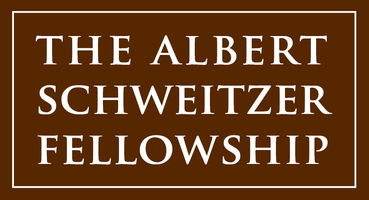November 15, 2020. The Daily Reflector. By Hannah Conley.

2018 NC Schweitzer Fellow
We teach children the names of many parts of their body, so why are the proper names for private body parts off limits? Throughout a child’s development, parents and guardians teach their children proper anatomical terms like “leg” or “hand.” However, Maureen Kenny from Florida International University and Sandy Wurtele from the University of Colorado shared their research that shows that preschoolers know the correct terms for their non-genital body parts, but few know the proper terms for their genitals. In this piece, I will share an argument in favor of the value in teaching our children the anatomic names for their genitals in addition to the rest of their body.
As a North Carolina Schweitzer fellow and student at ECU’s Brody School of Medicine, I had the opportunity one summer to teach second- to seventh-graders at Lucille Gorham Intergenerational Community Center about basic reproductive anatomy and physiology. The project addressed the increased prevalence of maternal disease and death, infant death, and sexually transmitted infections in Pitt County by establishing a reproductive health education program for all ages and genders in the community. The project is called PREP: Promoting Reproductive Health Education in Pitt County. This program used interactive sessions to teach a variety of topics including the following: healthy dating, contraception and sexually transmitted infections. Ultimately, the program increased sexual health knowledge and confidence by providing a safe, comfortable and longitudinal location for Pitt County residents.
Throughout that summer, my experience confirmed what I had read. Even in early adolescence, many of my students did not know the anatomic terms for their genitals. However, most of them knew slang words like “privates” or “wee wee.”
For the health and safety of our kids, they need to be taught proper words for all of their body parts, even the ones that are private and rarely discussed. Darkness to Light, a non-profit committed to empowering adults to prevent child sexual abuse, urges parents and guardians to talk to their kids about sex by the age of 8 and to make sure their kids know proper words for their genitals from an even younger age. As an example, this organization tells the story of how a young girl informed her teacher that someone touched her “cookie,” and the teacher assumed she meant the food so she dismissed her comment. However, the girl used “cookie” to mean her vagina. Darkness to Light explains that if that child had known the proper term for her genitals, then proper action could have been taken much sooner. When kids know and are comfortable using standard terms for their private parts, then they have one more tool to help protect themselves against sexual abuse.
Peggy Brick, a sexuality education consultant and trainer who has authored more than 50 articles and manuals on teaching sex education, says that when children learn the names of their body parts, they gain a sense of control over those parts. When a genital body part is named, the child can then discuss it, ask questions about it, and understand its specialness.
Bottom line: I strongly encourage all parents and guardians to please educate your children about proper names for all body parts. Let’s help ensure our children’s safety by just teaching them some anatomy.
Hannah Conley is a fourth-year medical student at the Brody School of Medicine at East Carolina University and a 2018-2019 NC Albert Schweitzer Fellow. She is from Raleigh, NC.
